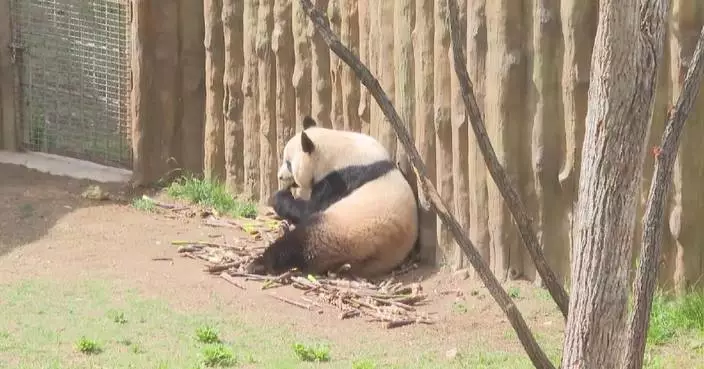The complete set of Qin Dynasty (221 B.C.-207 B.C.) bronze chariots and horses were put on display to the public together on Thursday in Xi'an City of northwest China's Shaanxi Province.
The first piece of the set, the No. 1 bronze chariot and horse, initially housed at Emperor Qinshihuang's Mausoleum Site Museum, underwent three years of meticulous maintenance before being relocated to the Bronze Chariot and Horse Museum, where the second piece of the set was kept.
The No.1 bronze chariot consists of an open chariot drawn by four bronze horses, with a single standing driver and a bronze umbrella on a stand placed next to him.
The second piece, No.2 bronze chariot, is a closed carriage with two seats and an umbrella-like roof, which is also drawn by four bronze horses.
The two Qin dynasty bronze model chariots, crafted over 2,200 years ago by skilled artisans to replicate the original appearance of the imperial carriage used by Emperor Qinshihuang, were discovered in 1978 at the mausoleum site.
Both models were restored and exhibited at the Emperor Qinshihuang's Mausoleum Site Museum in the 1980s.
In 2021, the Bronze Chariot and Horse Museum opened just 200 meters away from the official excavation site.
The No. 2 bronze chariot and horse were moved to the museum and made available for public viewing, while the No. 1 bronze chariot and horse underwent protection and restoration at the original exhibition hall at the Emperor Qinshihuang's Mausoleum Site Museum.
"The paint on it will naturally age and have related problems over time, and we need to reinforce and touch up areas where it's showing signs of wear, like flaking or powdering," said Liu Jiangwei, staff of the Cultural Relics Protection Department of the Emperor Qinshihuang's Mausoleum Site Museum.
Thursday marked the completion of maintenance for the No. 1 bronze chariot and horse, which was then officially showcased in the Bronze Chariot and Horse Museum.
The two bronze chariots and horses were put on public display together for the first time at their original site since their excavation.

Complete set of Qin Dynasty bronze chariots meet public
The Foping National Nature Reserve in northwest China's Shaanxi Province -- popularly known as a "home of giant pandas" -- has beefed up monitoring and protection of giant pandas living there at the current period of late spring and early summer, in which giant pandas are more active in the wild.
According to results of a latest survey, there are 67 wild pandas living in the Foping National Nature Reserve, with an average of one panda for every 1.5 square kilometers.
Experts and rangers of the nature reserve have been working with these rare species for many years and they are familiar with the habits of giant pandas.
"Look at the panda feces. What do they suggest? The shape and color indicate that they were excreted last night or this morning, given the pattern typical for this season in which they eat bamboo shoots," said Li Tao, an engineer with the Administration Bureau of the Foping National Nature Reserve.
Li said that such fresh excrement indicates recent frequent panda activities, which was further confirmed by a video captured in the reserve showing wild panda behavior. In the video, a male panda is seen rubbing its rear against a tree. Li explained that this behavior is the giant panda's way of marking territory and expressing affection towards a female panda.
"The digestive system of the giant panda still remains as that of a carnivore. By rights, it should eat meat, but it is indeed a real vegetarian. That is to say, more than 99 percent of its diet is bamboo. This dietary preference dictates that it must reside in a bamboo forest for its entire life, earning the giant panda the nickname 'bamboo hermit'," Li said.
The nature reserve has continuously strengthened the construction of itself into a giant panda habitat. Currently, it has established a comprehensive monitoring system network, which includes management administration, protection stations, and patrol points. These efforts are aimed at jointly protecting the giant pandas.
"We protect the giant panda and its habitat through extensive wildlife protection publicity, operation of a 24-hour network monitoring system, regular field patrols, and other special actions," said Zhu Dapeng, head of the scientific research section of the Foping National Nature Reserve.
In addition, the reserve also collaborates with the local community to protect pandas by organizing publicity and education activities, with an annual audience of at least 3,000 residents.
The Foping Nature Reserve, about 215 kilometers to the provincial capital city of Xi'an, lies on the middle of the Qinling Mountains and contain the highest panda population density in China.

Nature reserve in northwest China's Shaanxi beefs up monitoring, protection of giant pandas in activity season










